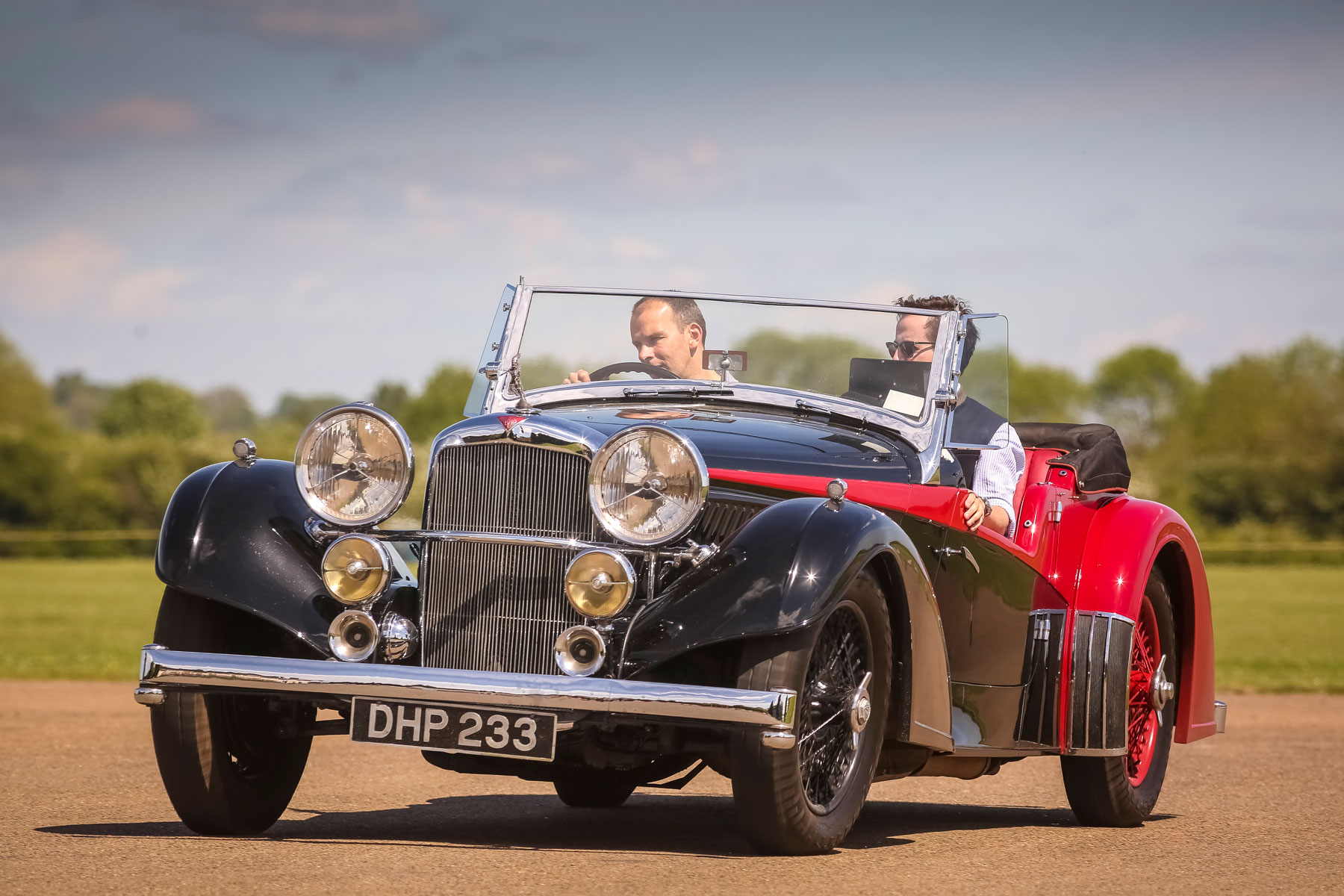
She looked at home, drenched in sunshine, in the evocative surroundings of Bicester Heritage. Like a glamorous film star of the 1930s, the Alvis 4.3-Litre Short Chassis Tourer has lost none of its charm in the 80 years since Vanden Plas lovingly crafted her flowing body.
I’m in Bicester for a preview of The Classic & Sports Car Show in association with Flywheel, which takes place over the weekend of 23 and 24 June 2018. Think vintage aircraft, military machines, historic racing cars and nostalgic fair rides, and you’ll have some idea of what to expect.
By then, there’s every chance that the Alvis 4.3-Litre could be on a ship, destined for a new life in the United States. David Cox, business manager at Robert Glover Ltd, the company entrusted with the sale of the car, told me that a US collector had expressed an interest, although, at the time of writing, it remains on sale for £500,000.
If that seems like a lot of cash for an octogenarian Alvis, a brief history lesson might be required.
A 1930s supercar
Before the outbreak of the Second World War, Alvis was one of Britain’s leading car manufacturers, building vehicles to rival the preeminent luxury car companies of the time. The Coventry-based firm developed a reputation for innovation and quality engineering, producing one of the world’s first front-wheel-drive production cars with overhead camshaft and an optional supercharger.
This followed success at the 1928 Le Mans, when the Alvis Car & Engineering Company finished sixth overall, securing a class win in the process.
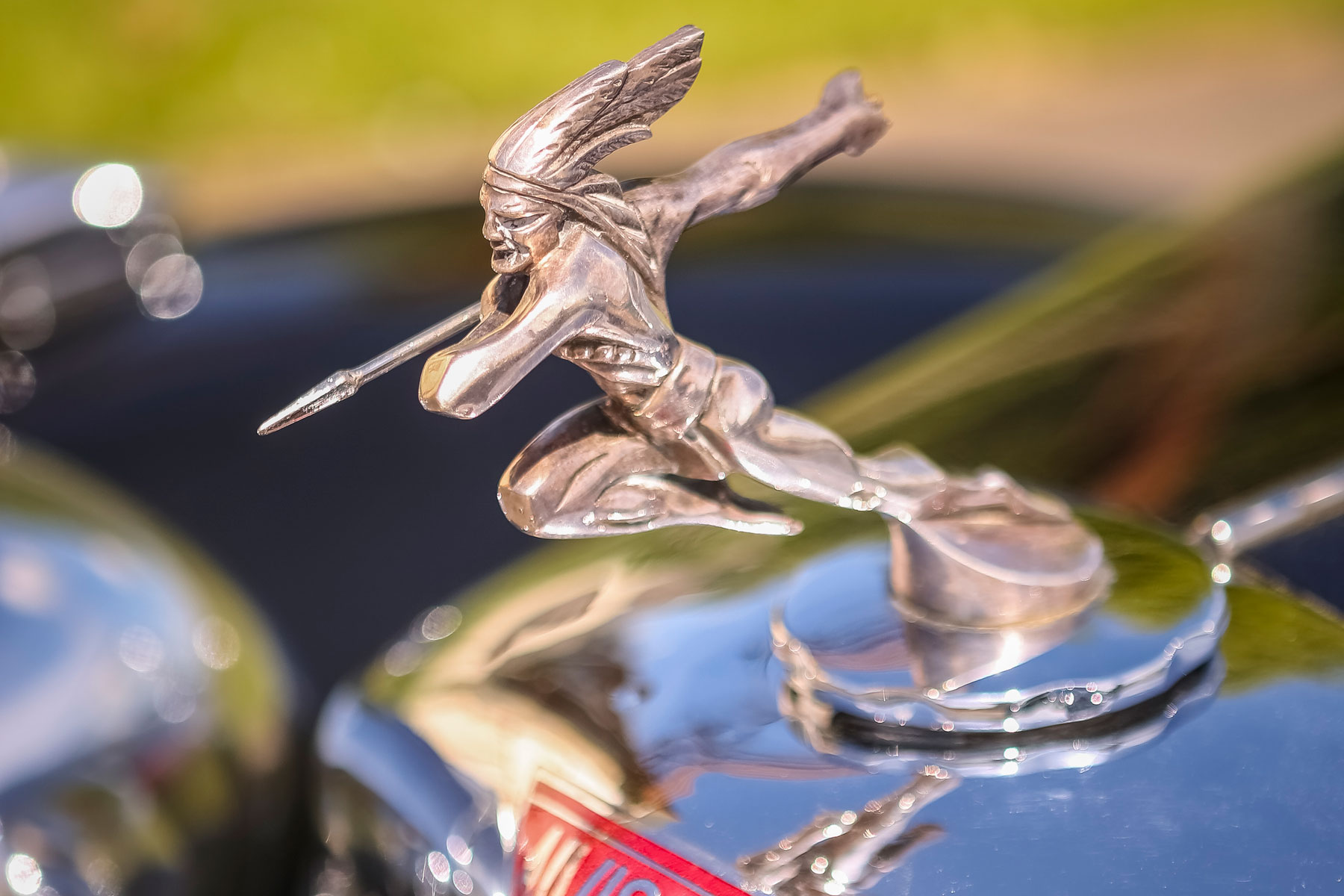
Alvis continued to push boundaries, going on to develop the world’s first all-synchromesh four-speed gearbox, as well as introducing independent front suspension and servo-assisted brakes to its production cars ahead of most other manufacturers.
Combine these with the firm’s straight-six engine, and you have the foundations of a marque with an ability to stand shoulder to shoulder with the likes of Bentley and Lagonda. Were it not for the outbreak of war, Alvis might have developed into a leading force in the automotive world, rather than becoming synonymous with military vehicles.
Car production continued after the war, but while the TA 14 was undoubtedly successful, WW2 seemed to strip Alvis of its pre-war swagger and verve, not to mention its assets. The car factory suffered severe bomb damage during a raid by the German Luftwaffe. Rover took a controlling interest in 1965 before the last Alvis rolled off the line in 1967.
All of which leaves the Speed 20, Speed 25 and 4.3-Litre as the high points in Alvis history. Which brings me back to the car in question.
One of only 12 cars built
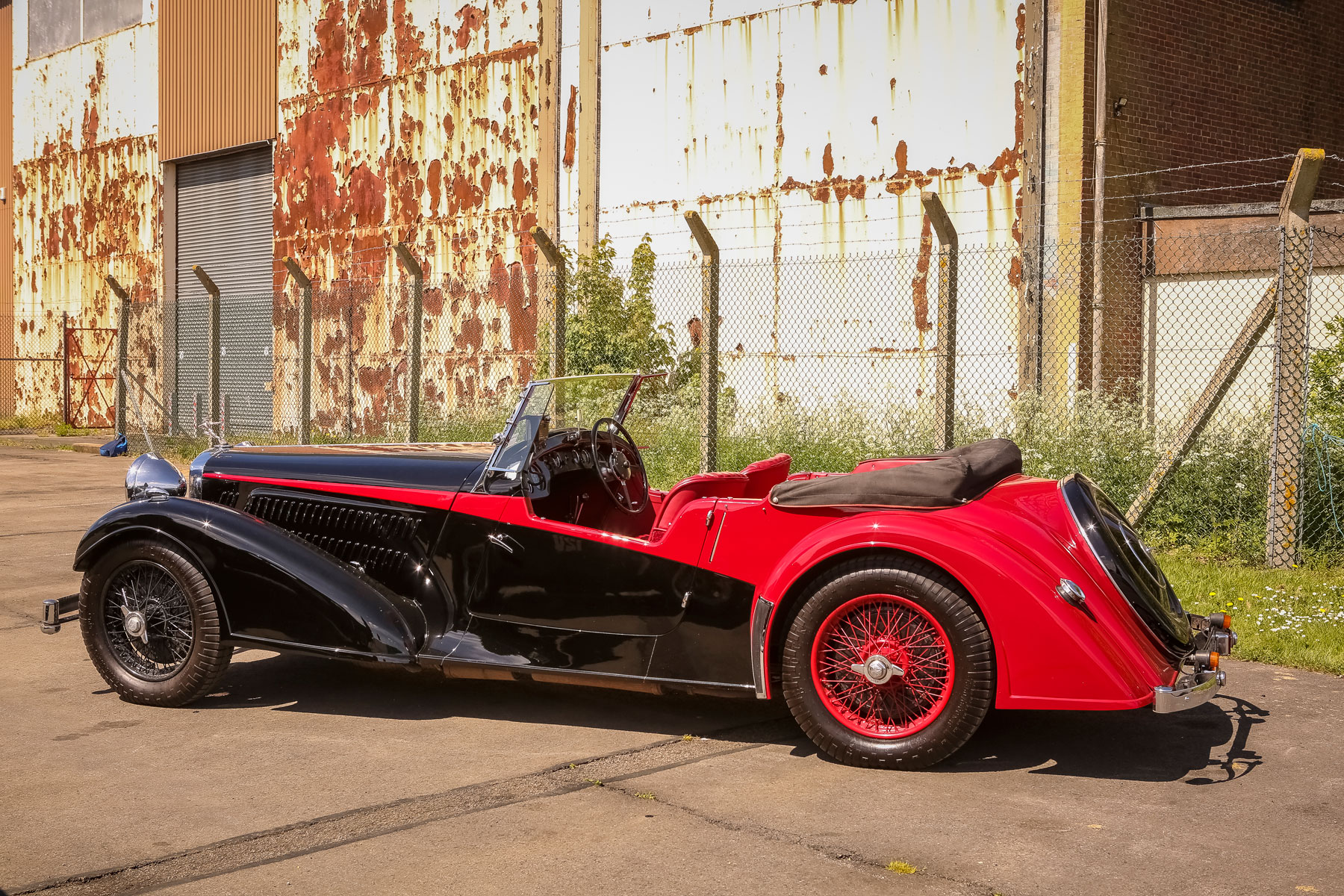
Alvis designed and produced the mechanical aspects of the 4.3-Litre, leaving the bodywork design and manufacture to be carried out by one of a number of coachbuilders, most notably Charlesworth, Mayfair Carriage, Holbrook and Offord. But the most desirable Alvis of all is this: the Vanden Plas Short Chassis Tourer.
Its engine was a development of the 3.5-litre Speed 25 introduced a year earlier, with three SU carburettors and a total output of 137bhp. In standard road trim, the 4.3-Litre could achieve a top speed of 105mph, making it the fastest British un-supercharged pre-war sports car.
Only 12 were produced – 11 of which remain today – and DHP 233 is undoubtedly the best of the breed. According to the Alvis Archive, chassis number 14812 was ‘dispatched’ to Messrs Hugh Anderson Ltd of London in October 1938, but records show that it had already spent time as a press and works demonstrator.
The Motor magazine described it as “a remarkable British car”, while The Autocar was similarly gushing in its praise for the 4.3-Litre Short Chassis Tourer, saying: “In the scheme of things there are cars, good cars, and super cars. When a machine can be put into the last of these three categories, yet is by no means in the highest-priced class, considerable praise is due to the makers. This model is the latest 4.3-litre Alvis Sports Tourer.”
There are photos of DHP 233 being used as an official car at the RAC Rally in 1938, along with an appearance at the Light Car Club Three Hour Race at Brooklands in July of that year. In September, the car is believed to have returned to Brooklands for the Dunlop Jubilee Meeting, where Tommy Wisdom drove in the Outer Circuit Handicap.
According to Wisdom: “The car I had for test differed from standard models in that the compression ratio of the engine had been increased to 8.5 to 1, which meant that use of 50:50 benzole mixture was necessary. Top-gear ratio was higher than standard, and the wings, lamps and screen were removed.
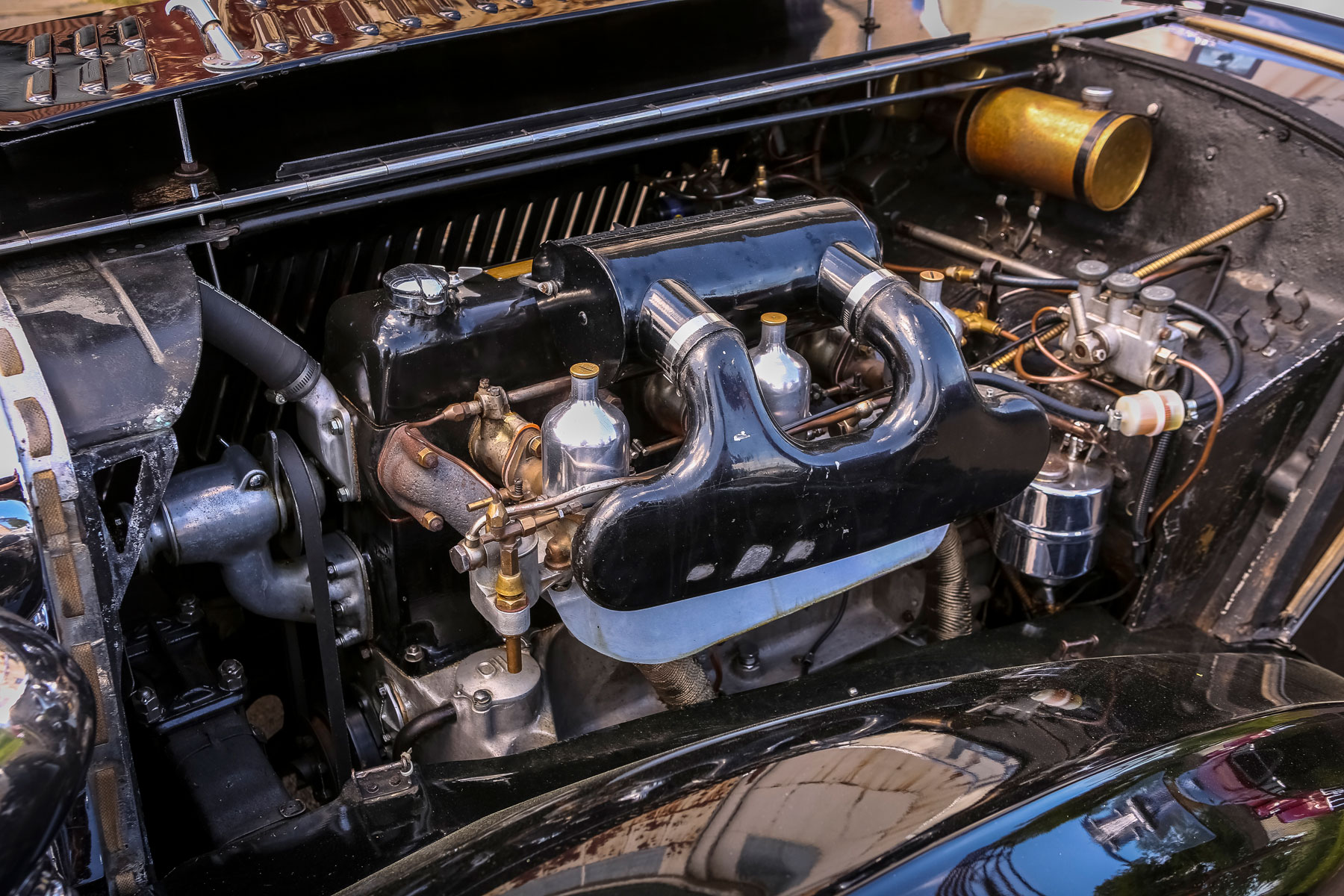
“In the 20 miles Dunlop Jubilee Outer Circuit Handicap at Brooklands on September 24th the car averaged better than 110mph for the race. The standing lap was covered at 92.23mph, three laps at 111 mph, two at 113 mph and the fastest at 115.29mph while the maximum on the Railway Straight, according to the revolution counter was 119 mph.”
Subsequently returned to standard road specification, DHP 233 passed through the hands of various private owners – including time spent as part of the Henry Petronis collection in the US – before being treated to a total repaint and retrim, along with a complete engine rebuild.
According to David Cox, bills on file amount to a “six-figure sum”, which goes a little way to justifying the half a million pound price tag. Not that DHP 233 has led a sheltered life in an air-conditioned basement. On the contrary, the vendor has taken part in many endurance rallies, including The Flying Scotsman, Cape Horn Rally and 1000 Mile Trial.
The vendor believes that cars are there to be experienced, which might explain why he was happy to let somebody like me drive such a rare vehicle. That said, the rally timing gear attached to the windscreen, the hastily applied and part-removed competition stickers, and rubber marks on the back seat from when the owner carried a set of tyres home from an event, would suggest that the vendor isn’t your average car collector. Respect is due, sir.
Tiger Moths and Billie Holliday
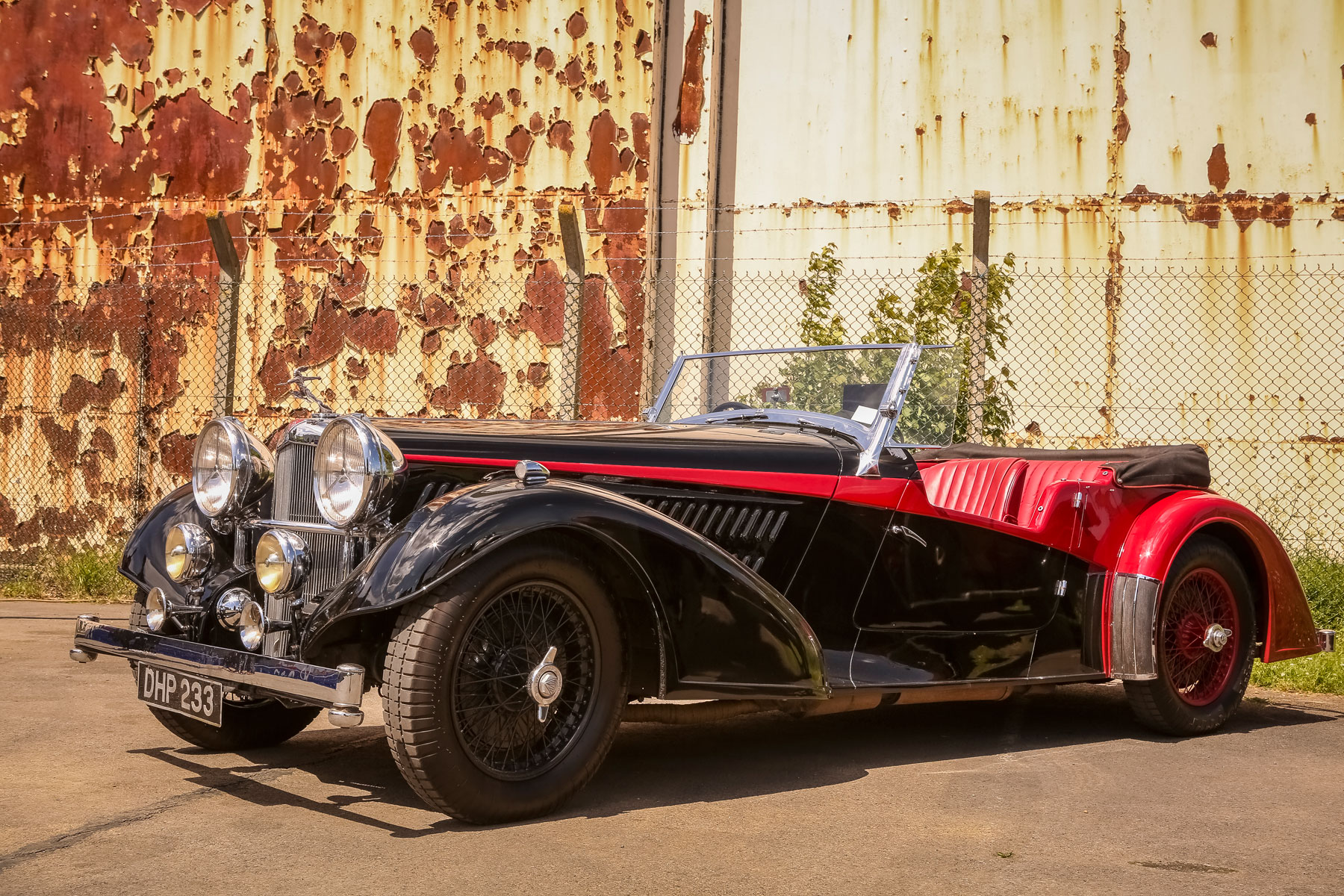
The 4.3-Litre is quite unlike the majority of cars from the same era. It sits low and long, its body hinting at a future focused on aerodynamics, its lack of running boards seemingly at odds with contemporary convention. It’s beautiful, arguably one of the best looking cars of the pre-war era.
Opening the cut-down doors reveals an interior that could be 10, possibly 20 years ahead of its time. The Smiths dials are utterly conventional, as is the pedal layout, itself a rare thing in the late 1930s. Only the ship-like steering wheel provides a clue as to the car’s vintage.
David completes the pre-drive rituals, which amount to little more than a “tickling of the carburettors”, flicking the fuel switch and waiting for the carbs to fill with petrol. Then there’s the small matter of moving the steering wheel-mounted ignition lever to ‘retard’ before she fires up with ease.
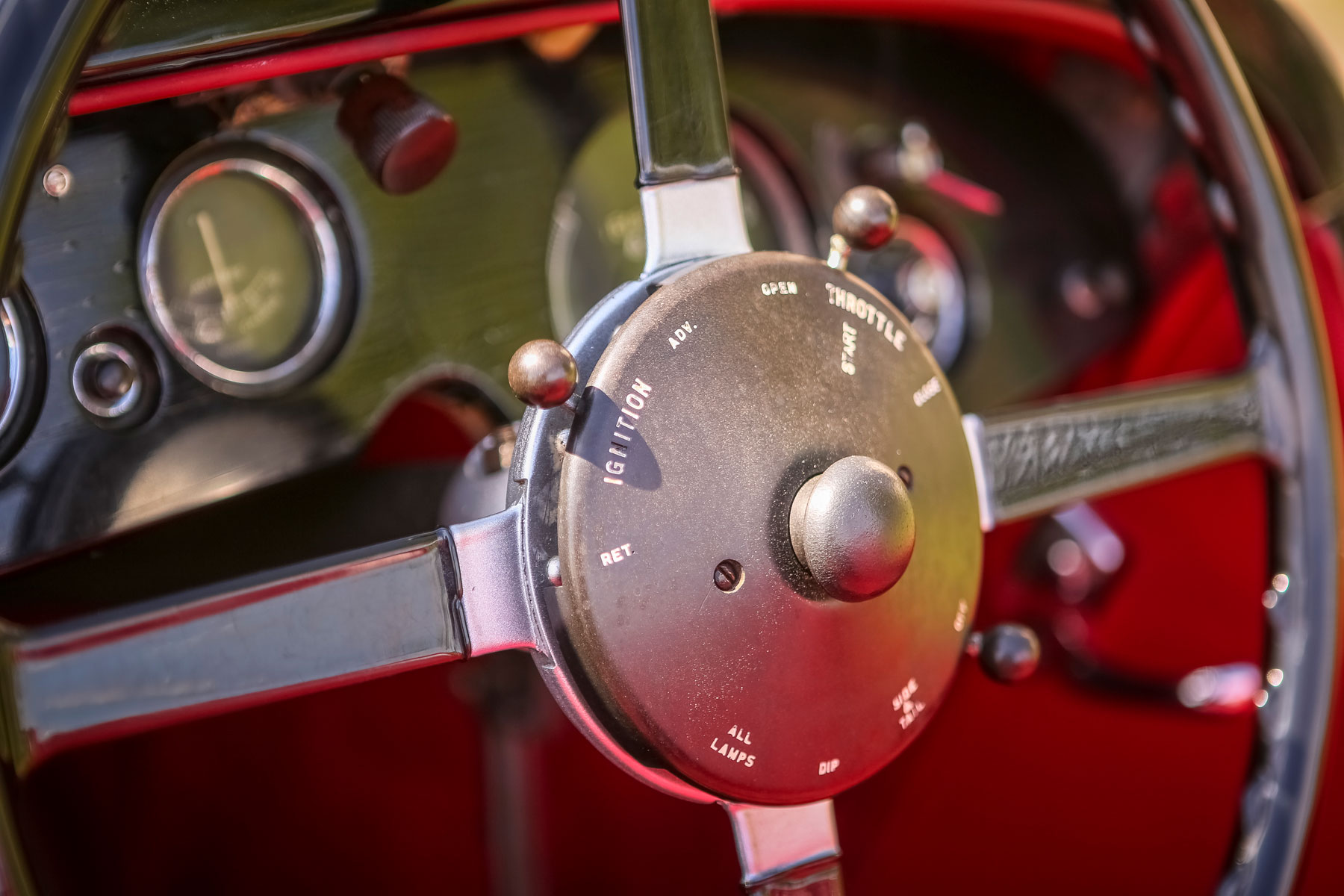
It’s my first taste of driving a pre-war car, and I’ll be honest, I feel like a cheat. The Alvis 4.3-Litre is no harder to drive than a sports car from the 1950s or even the 1960s. Everything is where you’d expect it to be and the driving position is low-slung and sporty. It’s little wonder Tommy Wisdom felt inclined to tackle Brooklands like Rob Bonnet.
Today, I won’t be hitting 119mph. I’ll be lucky to get out of third gear. But, the maze of roads within the former MOD site provide the perfect backdrop for the first taste of pre-war motoring. As a Tiger Moth swoops low overhead, all that’s missing is the sound of Ella Fitzgerald or Billie Holliday crackling through an old transistor radio for an authentic 1930s experience.
It’s all so familiar. The long gearstick finds first with ease, and I breathe a sigh of relief as I locate the biting point and move away without stalling. Weaving through the narrow lanes and parked cars at Bicester Heritage, there’s no escaping the fact that this is a large car, but it’s easy to plot a course, thanks to the impossibly large headlights and the wing mirrors perched on the top of the arches.
Into second gear, and then into third, the Alvis lures you into a false sense of security, but I’m soon reminded that some foresight is required to get the best from the ageing supercar. I approach a tight right-hander in third, leaving the braking too late and failing to set a good line for a smooth corner.
The old girl groans a little as if to demand a little more mechanical sympathy, and we’re a bit out of shape as we enter the bend. There’s no drama, but it’s a gentle reminder that behind that Swinging Sixties facade, it remains a car from the pre-war era.
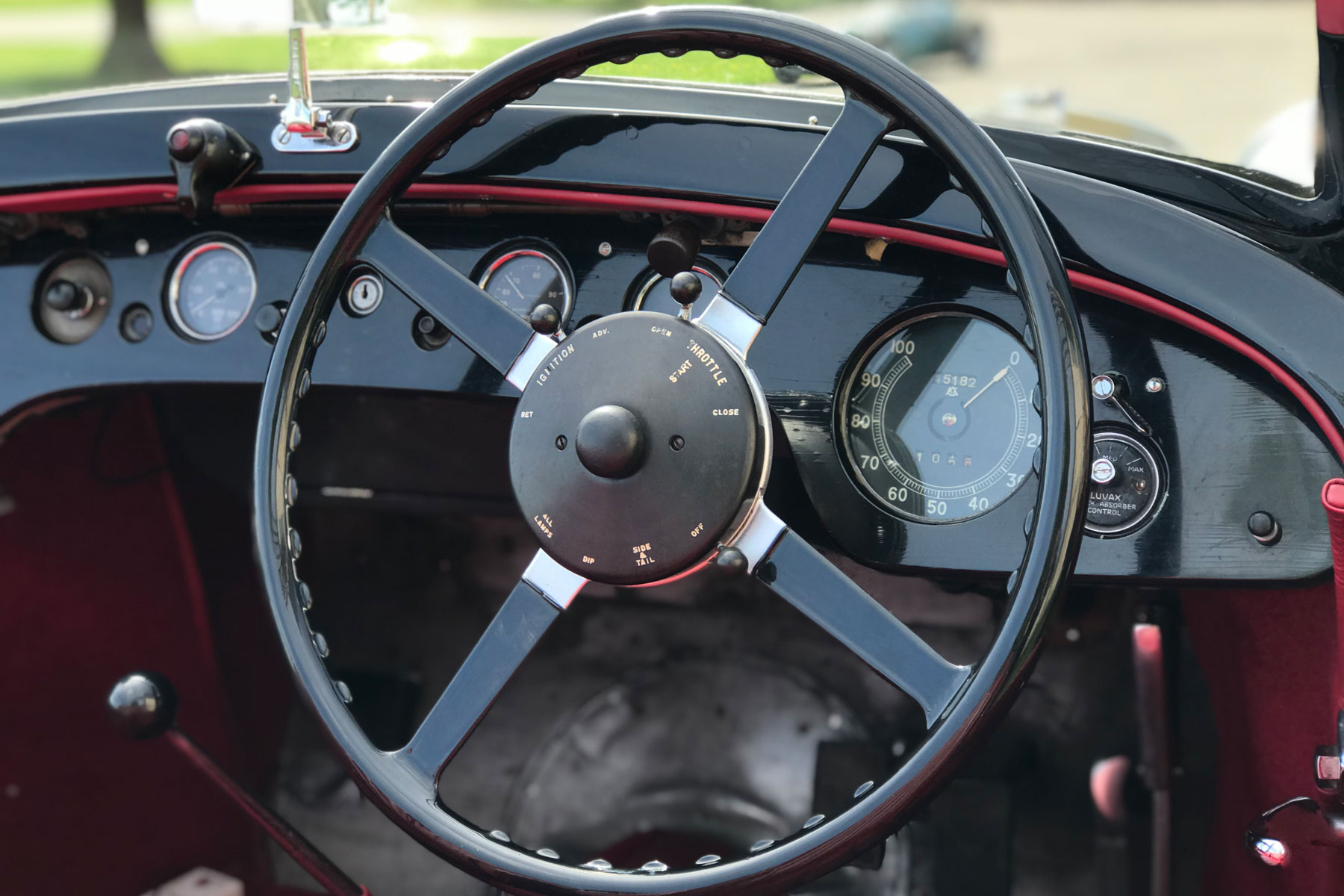
There’s time for a few laps of the Bicester track, where the Alvis can show her true colours. Keeping one eye on the oil pressure and temperature gauges positioned in front of the driver – the tachometer is on the far left of the dashboard – the 4.3-Litre has no right to feel this tight and agile.
The size of the steering wheel is such that you have to guide your way through a bend like a captain navigating his way across the Solent, but the entire car seems to shrink on the track. And for all the genius of the synchromesh, the short course demands only the use of third gear. Regardless of the speed of approach or exit, there’s a bucket-load of torque at your disposal.
It’s brilliant. So easy to drive and yet so rewarding if you adopt a smooth and relaxed style. It’s not hard to see why the vendor has resisted the temptation to maintain the Alvis as a museum piece. Cars such as this were designed to be driven, and I for one would relish the prospect of a weekend jaunt across France or an endurance event in the Highlands of Scotland.
Yours for £500,000
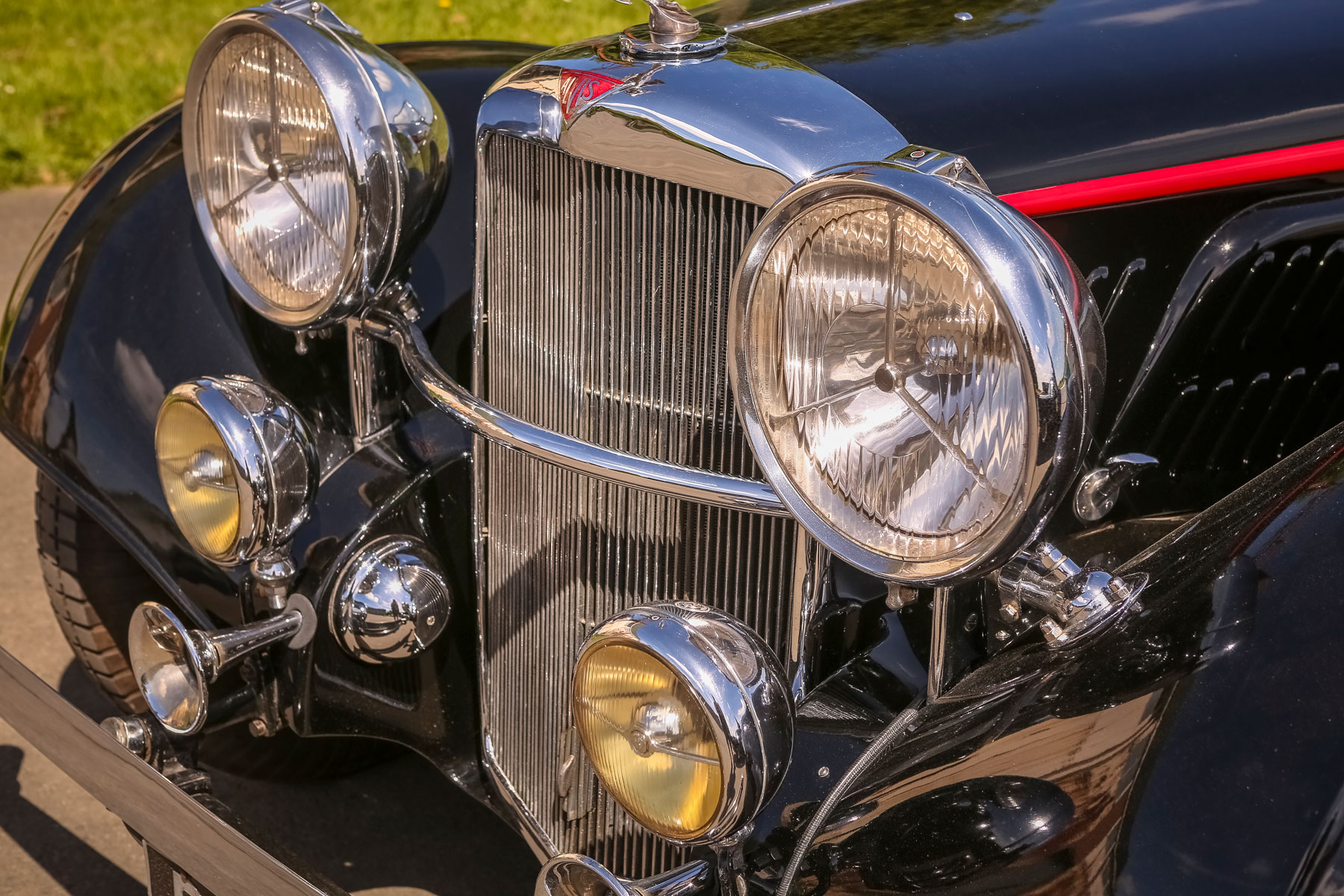
In an era in which folk are prepared to drop the equivalent of a deposit for a new house on a fast Ford or hot hatch, half a million pounds seems like a small price to pay for one of the most beautiful and technically advanced cars of the 1930s.
The next custodian of this elegant chunk of British motoring history is in for a treat. My brief encounter is just that: far too short. But I’m thankful to Robert Glover for the opportunity to experience this true great.
The Classic & Sports Car Show in association with Flywheel takes place on Saturday 23 and Sunday 24 June 2018 at Bicester Heritage, Oxfordshire. Advance ticket prices start from £23 per adult, £10 per child (5-15) and £55 per family.
For more details, visit www.classicandsportscarshow.com.
Read more:
- Future classics on offer at BCA Nottingham sale
- Driving the brand new car that’s 80 years old
- In pictures: Renault’s incredible classic car collection